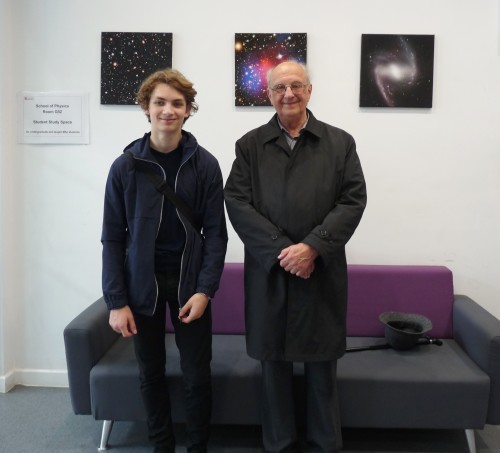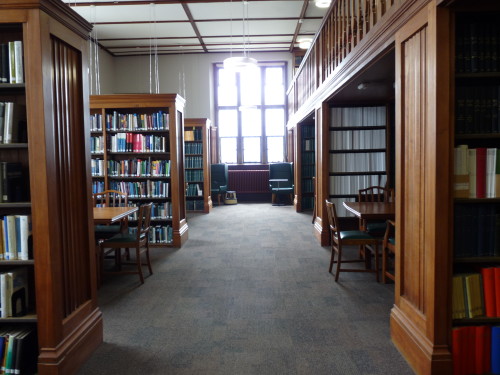
Meeting of minds: Sir John Enderby (right) was Felix James’ perfect physics tour guide. (Courtesy: Felix James)
By Felix James, a student on a work-experience placement with IOP Publishing
If you live in the UK, you are probably aware that at this time of year many school students are asked to do some kind of work experience. Teenagers like me find a placement we are interested in and then go there for a week – rather than school – to get a taste for what work is really like. For me this meant a week at IOP Publishing, which publishes Physics World, but it included an excellent tour of the physics department at the nearby University of Bristol.
Sir John Enderby, an acclaimed condensed-matter physicist, would be my guide for the day. John worked at the university as a professor and later as the head of the physics department for more than 10 years. In addition, John has served in a longstanding scientific advisory role for IOP Publishing.
I was shown around the numerous lecture theatres of the department, one named after John himself, while he explained that the original physics building was built in the 1870s with the financial support of Henry Overton Wills III, a Victorian-era tobacco trader. Apparently, the building was originally planned to be square with a courtyard in the centre. However, after a long time in construction they scrapped that and decided to just make it into an L shape.
Soon enough we were in the old library, which looked like it had been ripped straight out of Hogwarts. There were lanes of old hardwood shelves filled with reams of physics journals and a huge window with light pouring through at the end of the room.
After leaving the library, we went down to the second-year physics lab where a student was working with ultrasonic levitation. You’ve probably heard of ultrasound as an imaging method used to picture unborn babies, but ultrasonic actually just refers to any sound with a frequency too high for us to hear. The student was blasting ultrasound out of 60 tiny speakers facing each other vertically so as to create a thin column where the waves of sound collide. In the column were a few tiny polystyrene balls that were levitating on the effect of sound alone. You can find out more about the university’s ultrasound research in this podcast and video produced by Physics World journalists in 2014.
“I always wanted to understand how the things around me worked,” said the second-year undergraduate student, when he told me why he chose physics as his degree.
After leaving the laboratory John took us to the hallways, which were full of information about the discoveries the university staff had made over the decades. John explained the breakthroughs in condensed-matter physics before we ambled down to the reception where we said goodbye.
It was a truly interesting day and I gained some real insight into how universities run.

Guidelines
Show/hide formatting guidelines
this text was deletedwhere people live in harmony with nature and animals</q>
Some text